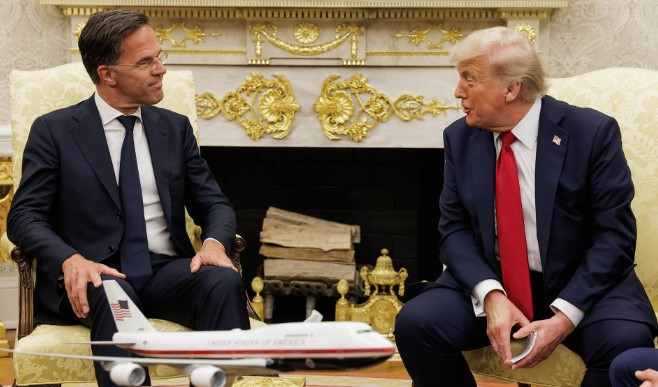A new proposal from U.S. President Donald Trump has stirred controversy across Europe and beyond. During a recent meeting with NATO Secretary General Mark Rutte, Trump announced a major military aid plan for Ukraine.
A Surprising Announcement on Ukraine Fund Plan Shakes Global Politics
The twist? This time, the aid would not come directly from the United States alone—instead, European nations would fund the weapons while the U.S. handles coordination and delivery.
Instead, Trump’s plan calls for NATO to take the lead in distributing weapons to Ukraine. Under this plan, European countries would fund the weapons, and the United States would handle the coordination and distribution. Reports suggest that as many as 17 Patriot missile systems could be included in this package, making it one of the largest funded aid efforts so far.
However, this announcement has not been met with universal support. Critics are questioning whether NATO can legally or practically support such a plan. Some even call it a political stunt.
Ukraine’s Patriot hope rides on NATO wallets — Trump enforces pay-to-arm model
Ex-French General Raises Fund, Legal, and Logistical Concerns
One of the loudest voices questioning the plan is retired French Brigadier General François Chauvancy. In a strong public statement, Chauvancy warned that NATO does not have the legal structure or financial resources to fund and arm a third country like Ukraine.
According to Chauvancy, “NATO is a defensive alliance, not a weapons supplier.” He emphasized that the alliance was created to defend member countries, not to engage in the arming of non-member nations during ongoing conflicts. He also pointed out that NATO’s budget and supply chain are not set up for this kind of funding operation.
NATO typically works on the principle of collective defense under Article 5 of its founding treaty. Sending arms to Ukraine in this manner could, according to some experts, stretch that principle beyond its intended limits. Chauvancy warned that such actions could confuse NATO’s original purpose and potentially create long-term instability within the alliance.
Logistical issues also present a major roadblock. Organizing the transport and delivery of advanced weapons systems like Patriot missiles across international borders into an active war zone requires massive coordination. These operations are usually managed by individual countries, not an alliance like NATO that relies on consensus among 31 member states.
Zelenskyy Warns US Support Is Key to Stopping Russia’s NATO Aggression
Political Motivations, Funding Burden, and Global Reactions
Many analysts are also viewing the aid plan through a political lens. Some critics suggest that Trump’s announcement is more about politics than real military strategy. They argue that the move is designed to show leadership and decisiveness ahead of upcoming elections, rather than provide an effective solution for the Ukraine conflict.
The timing of the announcement, made during a high-profile NATO meeting, also raised eyebrows. Trump presented the aid plan as a significant step forward, but did not offer full details on how it would work in practice or how European nations would split the funding burden.
Some NATO member states have already expressed doubts about the plan. While a few countries support stronger help for Ukraine, others are hesitant to commit large amounts of funds without clear guarantees and control.
Mounting Tensions and Unanswered Questions
Meanwhile, Russia has reacted strongly to the proposal. The Kremlin accused Western nations of fueling the conflict in Ukraine and warned that more weapons will only lead to more destruction. Moscow’s message is clear: increased military support for Ukraine from NATO-backed efforts will only prolong the war.
Despite these warnings, the discussions around the aid package continue. So far, no final agreement has been reached. NATO as a whole has not issued an official statement supporting or rejecting the plan.
Red Line Crossed: NATO Bases Now Just Miles from Russia’s Border — Kremlin Issues Stark Warning
This situation leaves many questions unanswered. Can NATO really take on the role of funding and distributing weapons to Ukraine? Is Trump’s plan a workable solution or just a dramatic political gesture?
For now, all eyes remain on the leaders of NATO and the countries involved, as they decide how to respond to one of the most divisive military proposals in recent years.
